- Share via
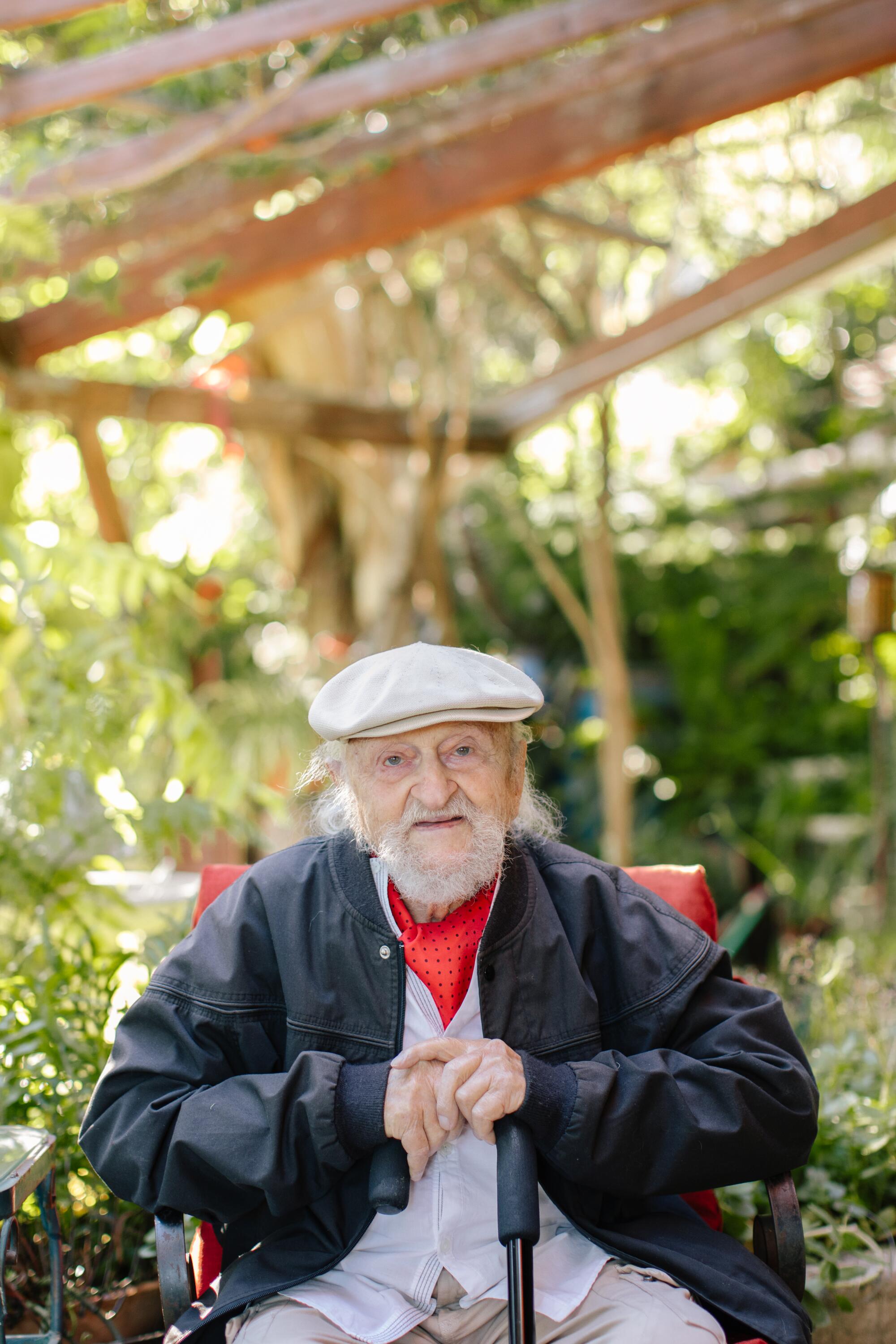
“At that time, I was winning awards, I was one of the leading artists in the area, I was honored and prominent and acquainted with other artists, but my misfortune was to outlive them all,” Ernest Rosenthal says with his characteristic dry wit of his art career in the 1960s and ’70s.
Sporting a black beanie, scruffy beard and rose-colored glasses that belonged to his late wife, Meryl, he looks every bit the seasoned bohemian artist, though perhaps a decade or two younger than his 102 years. We’re sitting outside the hillside home overlooking Laurel Canyon he began building in the late 1940s. Surrounding us is the lush, verdant garden he started at the same time, a sprawling acre brimming with oak, pine, elm and cedar trees, along with cactuses, ferns and jade plants.
He named it Nunca Descanso Gardens (Never Rest Gardens), a play on Descanso Gardens, the manicured botanical gardens about 20 miles to the northeast in La Cañada Flintridge. Fiona, one of Rosenthal’s cats, waltzes across the stone patio as he points out a towering ash tree, which he planted as a sapling more than 70 years ago. “A garden is not a one-time event,” he says in his slow, measured tone. “It’s a living thing, a body that gets modified. You have to attend to it all the time. But that is part of the pleasure.”
I’ve come to Rosenthal’s home at the end of a windy dirt road, in the quiet hills above the Sunset Strip, to discuss his exhibition, “Retro/Introspective,” organized by the L.A. art space Last Projects and housed at the Frogtown artist compound Tin Flats. Up through March 19, the show covers almost 80 years of the artist’s work, and includes about 300 drawings, paintings and prints hung salon-style that zigzag across several styles, some of them seemingly incongruous, and creative modes he’s probed across the decades.
“Seeing it all laid out has been transformative,” says Ilona Berger, one of Last Project’s founders. “It’s a tour of 20th century art to a great extent, starting with the European modernist portraits and following these strands of his work that look very different. There’s a searching quality in all his work, fusing disparate art movements, at a time when they were at odds with each other.”
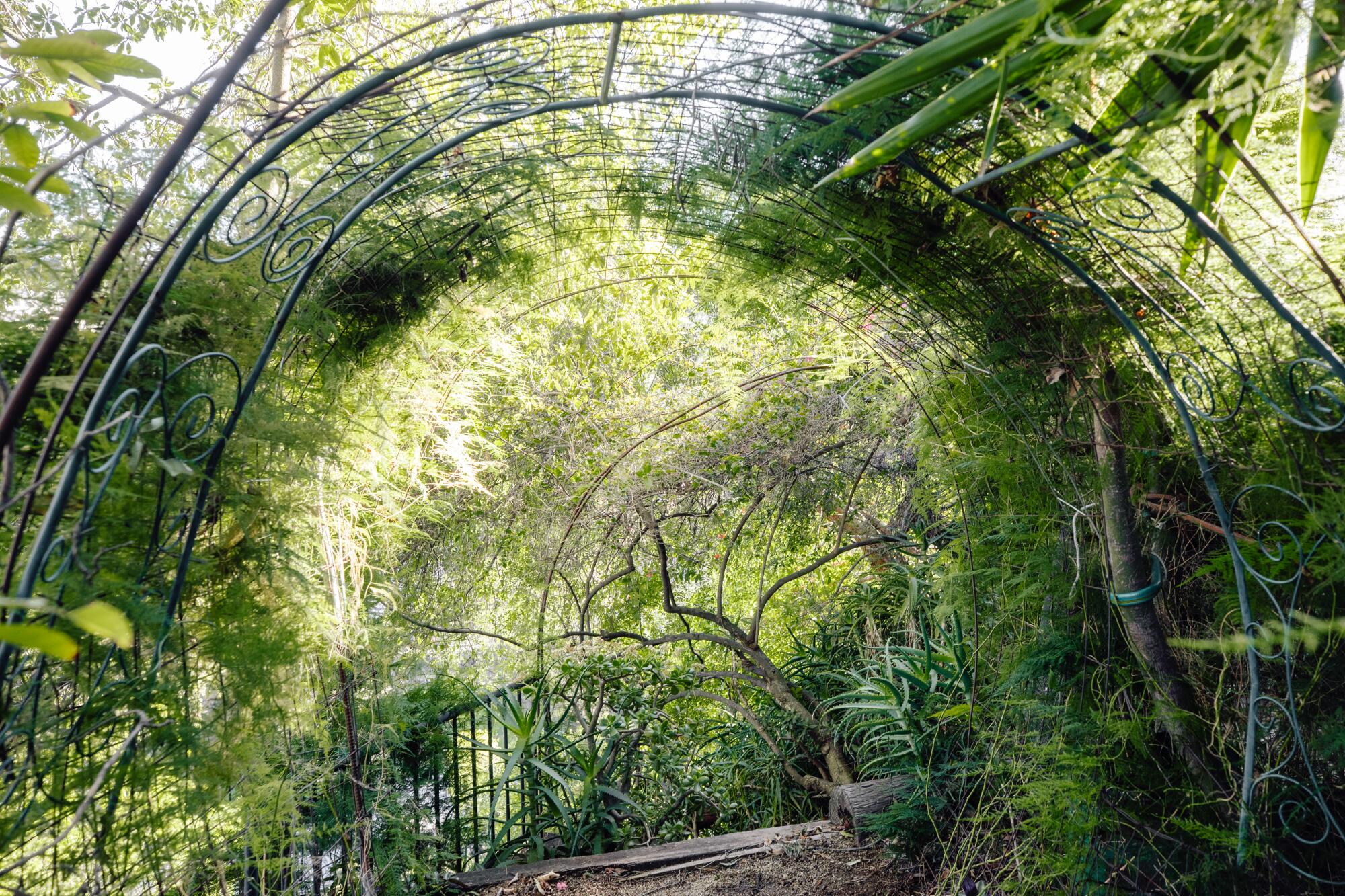
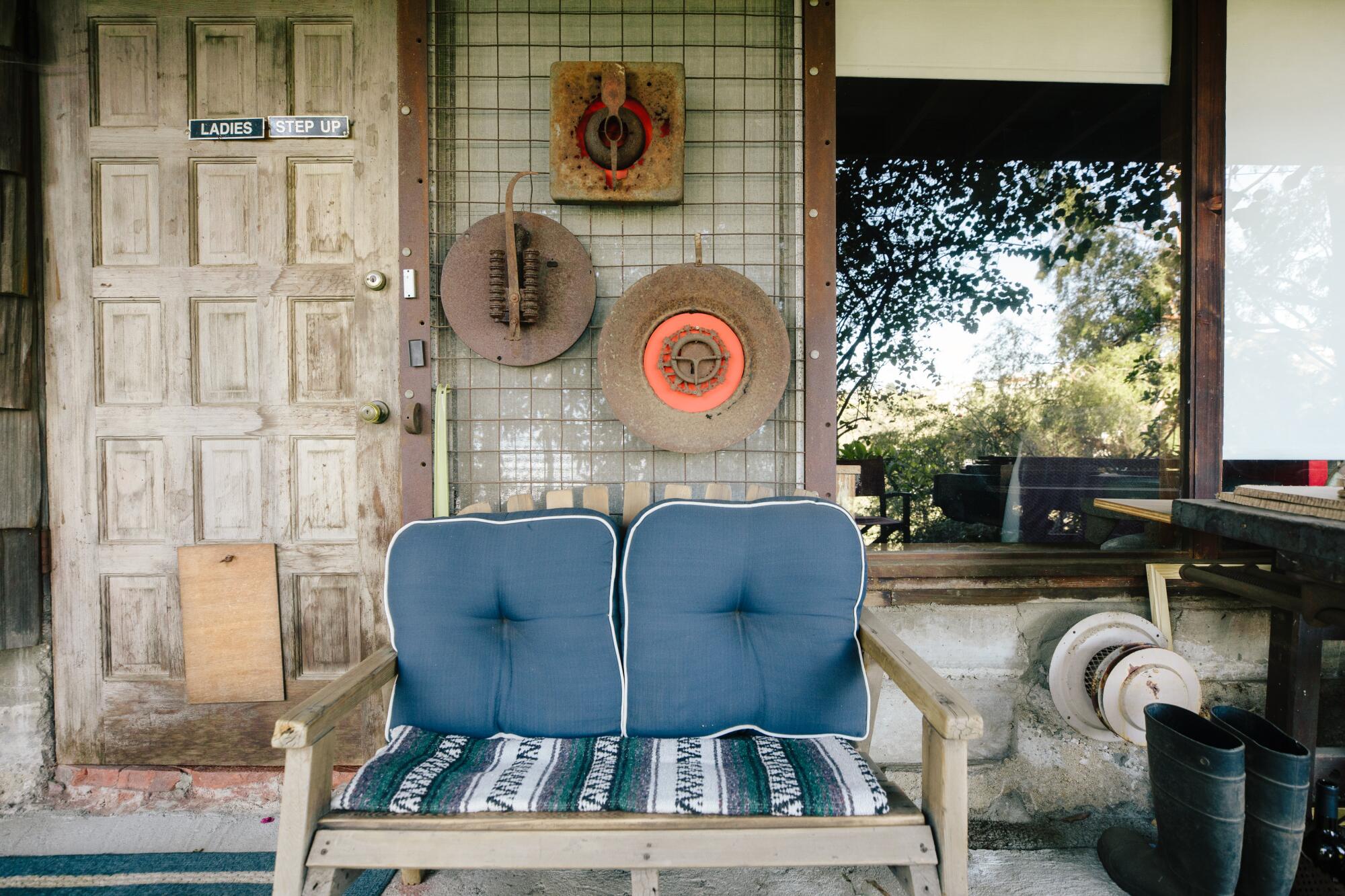
Eschewing a chronological format, the retrospective draws connections among works from different eras, media and techniques: from raw, sensuous life drawings to painterly portraits and still lifes to prints that straddle the line between figuration and abstraction. One of the first works on view is a 1956 painting titled “Experiments in Vegetarianism,” which depicts an abstracted meat market window with surreal horror, all blood and bone, meat and hooks. Venture further into the show and you’ll find an undated triptych of prints that explore line, color and form with an exuberant visual curiosity, featuring green and brown fields punctuated by sinuous electric yellow and red bands.
”It’s not a destruction of the figure, but an abstraction of the figure,” Jack Rutberg, a longtime L.A. art dealer, said after seeing the show. “That’s where so many artists get it wrong. They force it and lose any kind of semblance of poetry. There is an elegance and eloquence in his line.”
Despite Rosenthal’s long and prolific career, he has had only a handful of solo exhibitions, with hardly any shows outside California. Ask any art school graduate who Ernest Rosenthal is and you’ll likely be greeted by a blank stare. Yet he is the quintessential artist’s artist, focused only on the singular pursuit of his creative vision. “I never tried to make money with my work,” he said. “I didn’t even show for many years, until Ilona came and opened some of the drawers downstairs.”
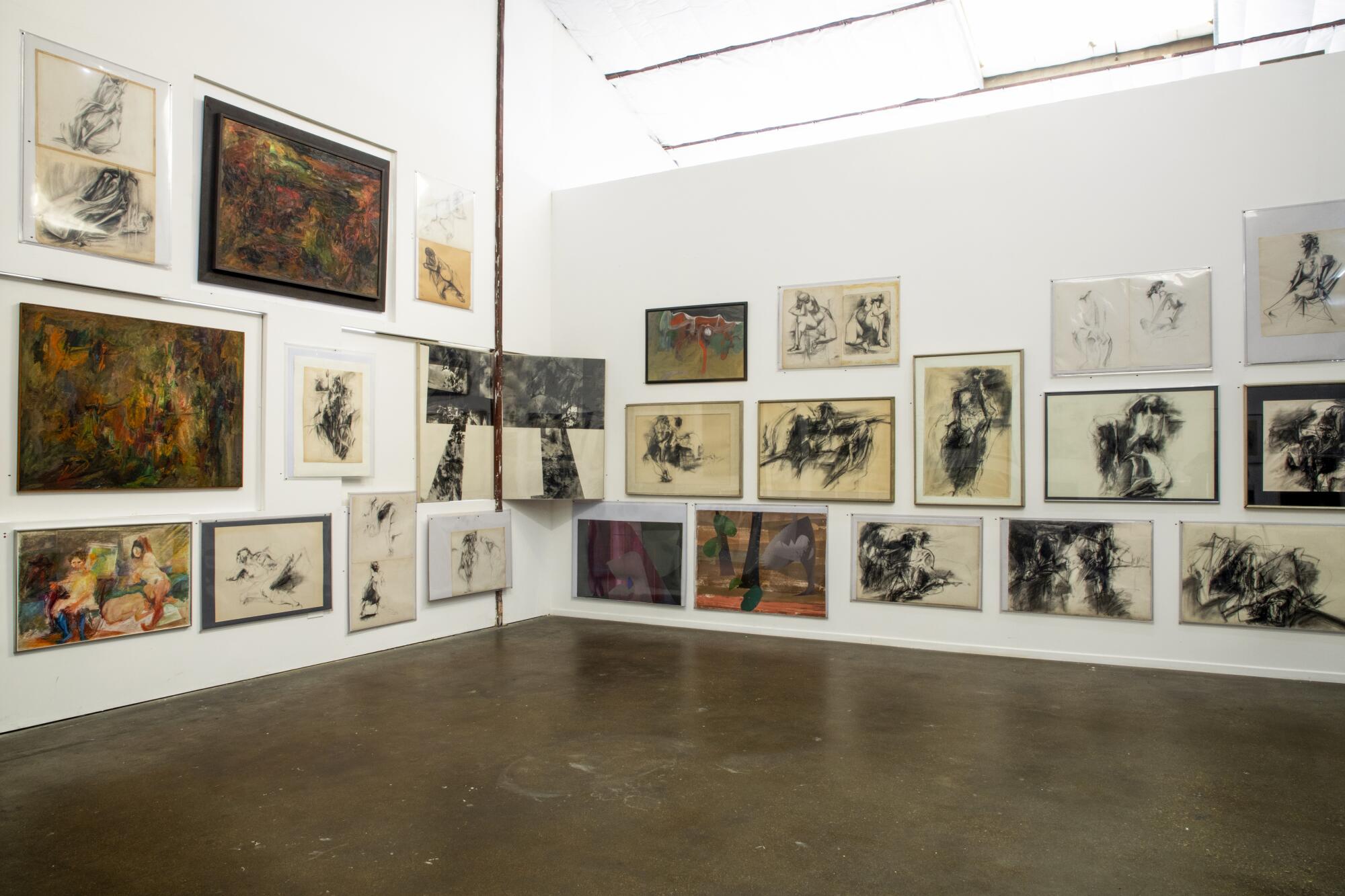
Born to a middle class Jewish family in Vienna in 1920, Rosenthal began drawing and painting as a child. He had a seminal artistic experience when, as a teenager, he hitchhiked to Paris to see Picasso’s “Guernica,” which the artist had painted in response to the bombing of the eponymous town in northern Spain during the Spanish Civil War.
A childhood friend of Rosenthal’s lived below a sculptor named Egon Weiner, whose Vienna studio he would visit, kindling an early fascination with sculpture. After the Nazis marched into Austria in 1938, Rosenthal recalls that they had to hide Weiner’s monumental sculpture of Moses, as Weiner’s father was Jewish. The sculptor eventually escaped Vienna and settled in Chicago, where he taught at the Art Institute.
The tide would soon turn for Rosenthal as well. He was expelled from high school along with all the other Jewish students, and his father was called before the Gestapo when someone overheard him proclaim, “I will be glad when the first Nazi is hanging.” His family fled, arriving first in Belgium, then in New York after a distant relative in New Rochelle sponsored them. The Rosenthals relocated to California, where Ernest studied art for four years until he was drafted into the U.S. Army in 1943. After a stint at a weapons depot in Iceland, he was granted citizenship and returned to the U.S., where he met his future wife, Meryl, a modern dancer from Minnesota who was modeling for a life-drawing class held at Rosenthal’s sister’s house on Long Island. After a whirlwind romance, the couple drove out to L.A., where they lived in a trailer under a walnut tree in Rosenthal’s mother’s backyard.
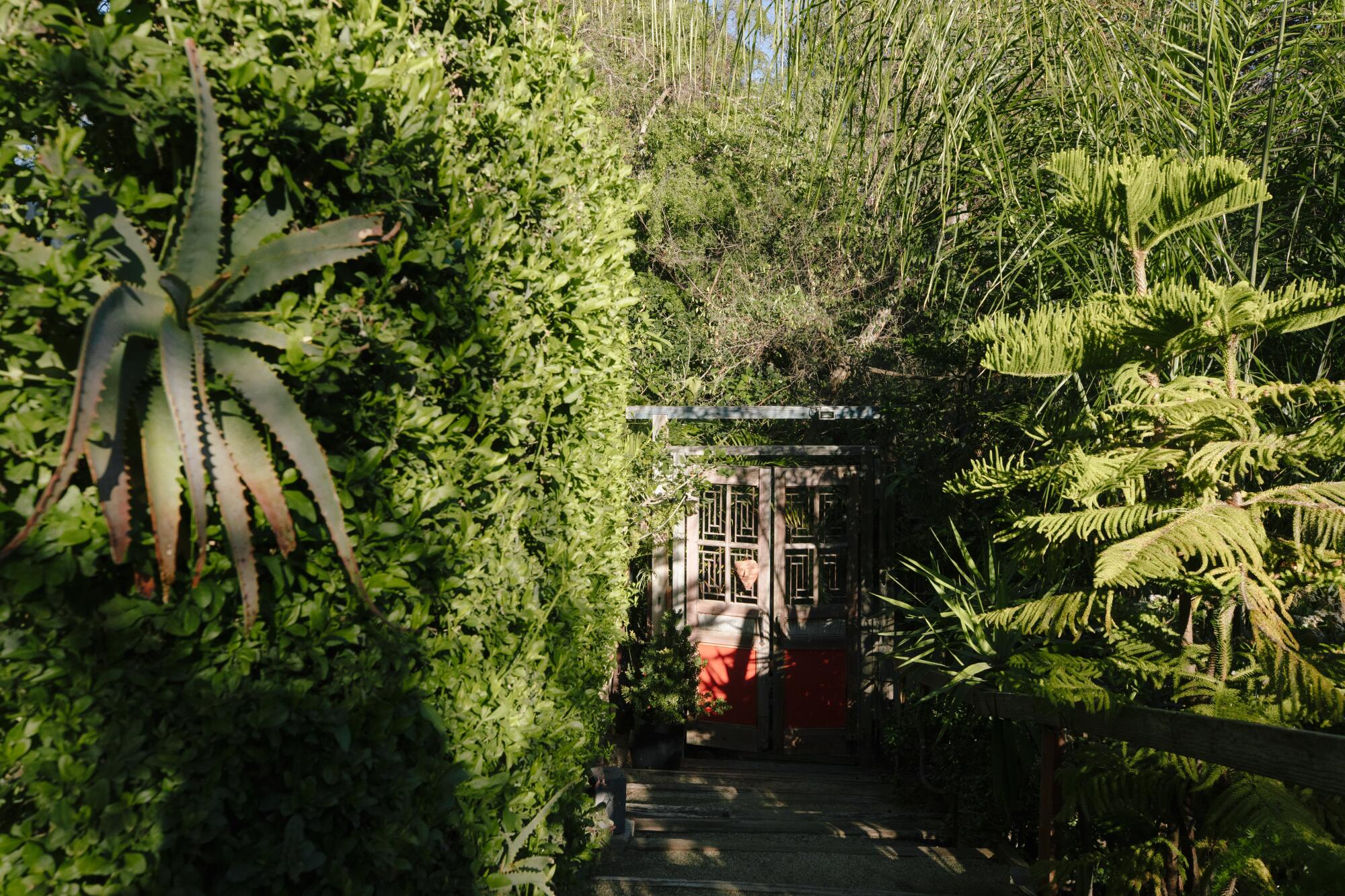
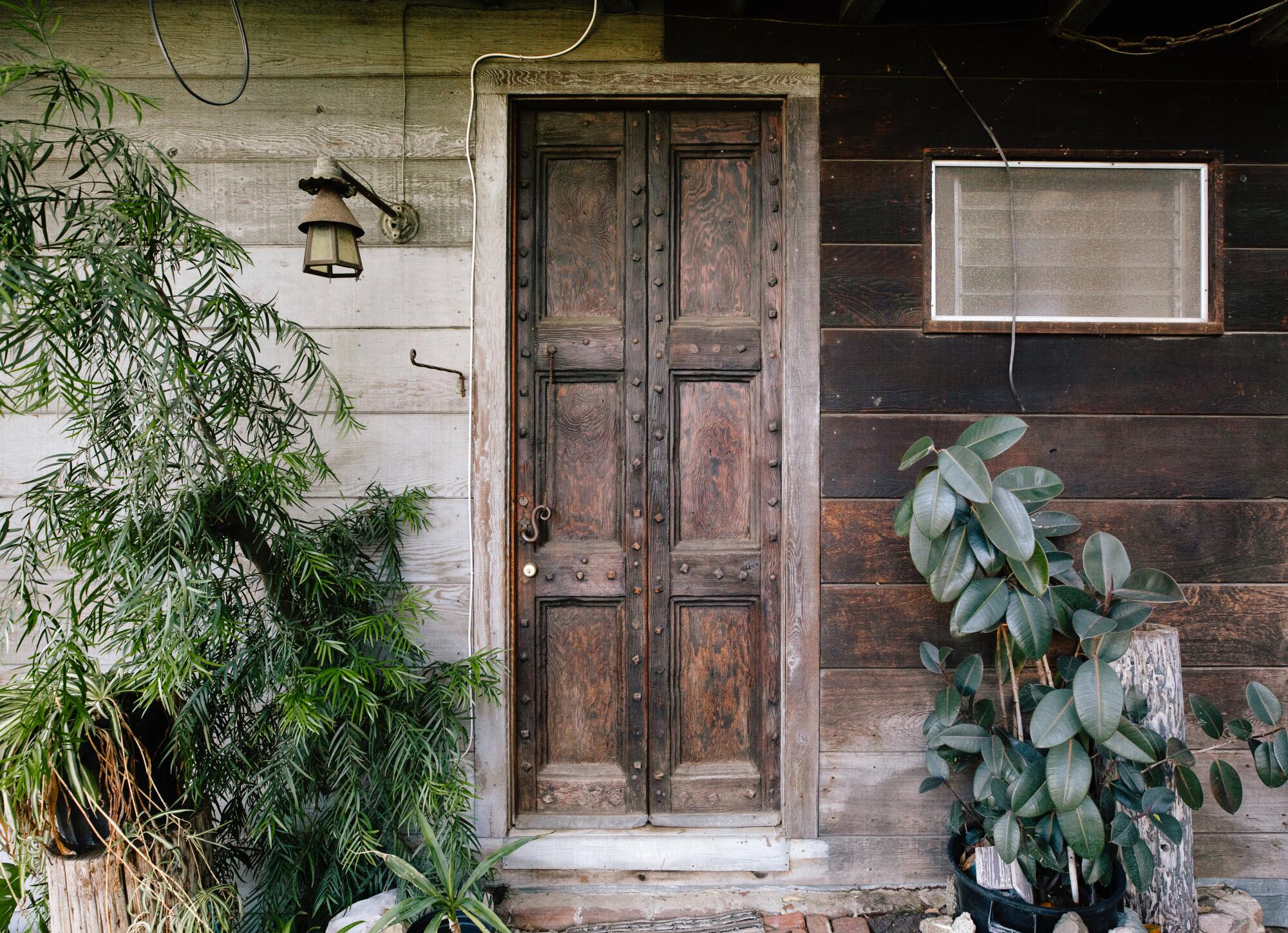
Before he was drafted, Rosenthal had met Hans Burkhardt, a Swiss artist who moved to L.A. in 1937 and was considered the foremost proponent of the New York School of Abstract Expressionism in L.A. In Burkhardt, Rosenthal found an artistic mentor and lifelong friend.
“Ernest was always a huge admirer [of Burkhardt’s]. You can see the influence, but Ernest had his own eye, his own hand,” recalls Rutberg, who represented Burkhardt’s estate from 1973 to 2017.
At the time, Burkhardt lived in Laurel Canyon. Shortly after they arrived in L.A., Ernest and Meryl bought a steep hillside lot on a ridge adjacent to Burkhardt’s and began building a modest house in a clean, modernist style. With little money, Rosenthal scavenged materials to build the house and garden. He got free car wheel rims from his brother-in-law, who ran a junkyard, to build steps for the terraced garden, and swiped a front door from an old film set. “There was a lot of good material in dumpsters. They wrecked all kinds of homes down on the boulevard,” he recalls. “I was always picking up used bricks.”
In 1951, Rosenthal enrolled at the Otis College of Art and Design, where he encountered lithography, a process that involves drawing on a flat stone with a wax crayon to create a print. “One of the instructors discovered an old hand-operated lithography press in the basement, but it was all discombobulated,” he recalls. Rosenthal and some other students assembled it, and it was on that press that he printed his first lithographs.
After graduating, he went to Mexico City on the GI Bill to continue his study of lithography and printmaking; there, he encountered the work of Mexican muralists, including José Clemente Orozco, David Alfaro Siqueiros and Diego Rivera, whose epic artworks brimmed with social commentary.
In the mid-’60s, he was tapped by June Wayne to work at her Tamarind Lithography Workshop, where he printed works for artists including Anni Albers, Rufino Tamayo and Lee Mullican. From there, he was recruited to start printmaking departments at Occidental College and then at California State Dominguez Hills, where he taught until his retirement in 1985.
“Ernest is one of the most passionate creatures in the world,” says Gilah Hirsch, an artist who taught alongside Rosenthal at Dominguez Hills. “I know his students were very stimulated by the sheer energy that emanated from this man.”
Over the two decades that he taught, Rosenthal continued creating painting, making prints and experimenting with new techniques like screen prints made with materials that fade when exposed to light. His work was included in several group shows, mostly around L.A. at university art galleries or municipal art spaces, rarely at commercial galleries.
And then in the mid-1980s, he just stopped. He retreated to the garden that would become his obsession for the next several decades.
“He had been my mentor, and I couldn’t understand how he stopped making art,” recalls Tom Field, an artist who studied with Rosenthal at Occidental and now lives on his property as his care manager and groundskeeper. “One day, he said, ‘What’s the difference? I put a rock here in the garden or a line on the canvas over here?’ Then I understood. The garden became his palette. It’s probably his masterpiece.”
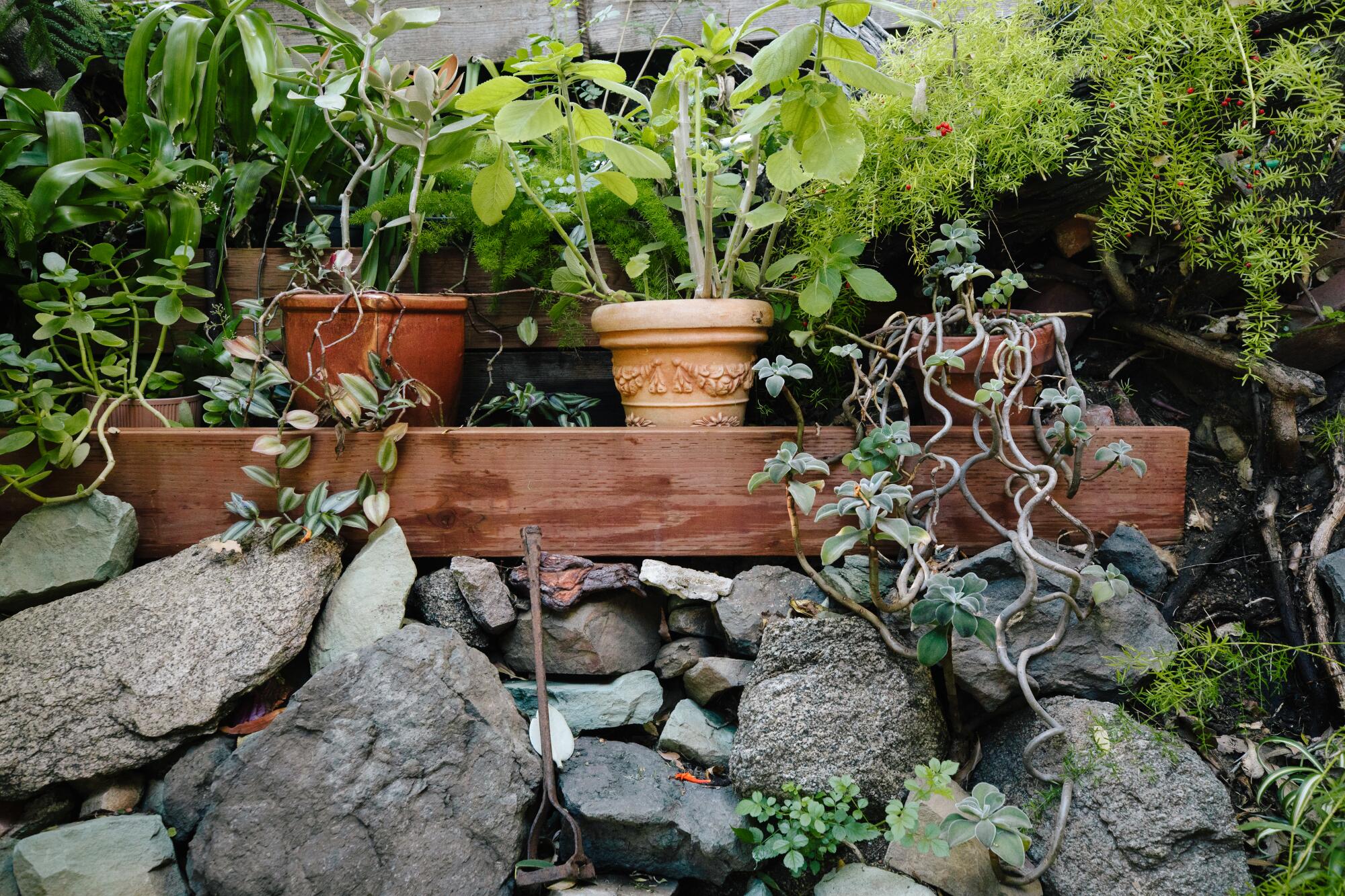
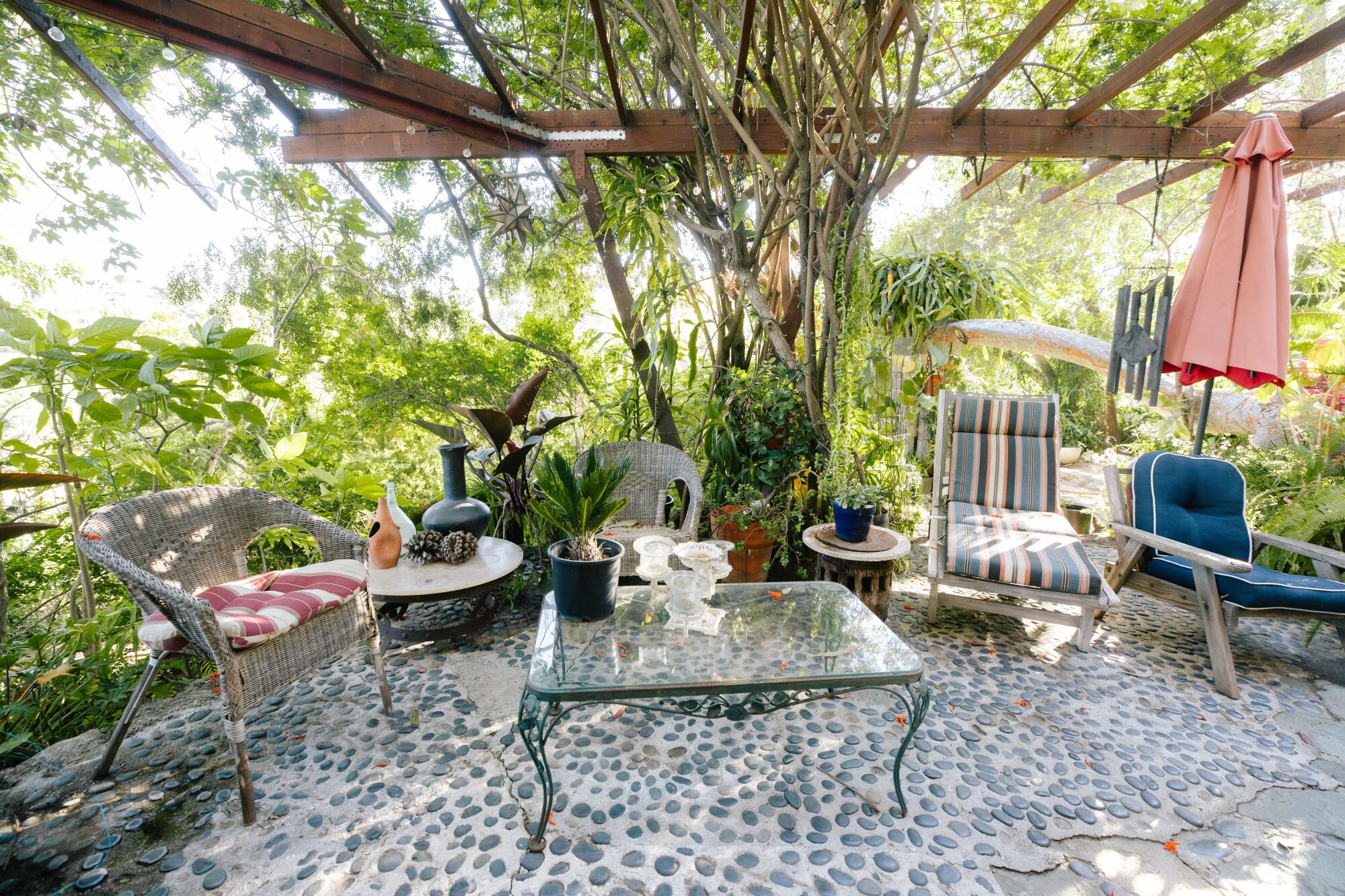
Despite his affirmation that he was one of the “leading artists in the area,” Rosenthal never achieved the acclaim of other Angeleno artists around him, or even his mentor Burkhardt.
He certainly did receive recognition at the time, as evidenced in a 1965 Artforum review of a drawing show he was part of at the Quay Gallery in Tiburon, Calif., in which critic James Monte seemed to favor his work over that of the more well-known John Altoon, whose organic abstractions bear some resemblance to Rosenthal’s. “Both Altoon and Rosenthal are represented by works of the highest quality,” Monte wrote. “Rosenthal in particular seems to have loosened the elegant draperies of human forms coupled in mortal combat so characteristic of his earlier drawings, in order to achieve a more generalized abstract interplay of shape against shape.”
But his own particular irascible disposition, as well as L.A.’s artistic climate of the time, conspired to keep him out of the spotlight.
As an older, European artist in the 1950s and ’60s, Rosenthal seemed more in line with New York artists than those in the younger L.A. scenes centered on the Ferus Gallery’s “Cool School” amid the rise of movements like Pop Art, Minimalism and Light and Space. “When you look at what was going on in L.A., it was all youth,” recalls Rutberg. “[Rosenthal’s] work speaks volumes. It’s hard to fathom that artists of that caliber should be marginalized, but that’s the way L.A. is and was.”
“I can’t see him ever being phony, being tactical socially. He always seemed really honest, in a way that most people aren’t. I can’t say he’s easy to work with. He’s incredibly stubborn and proud and vain. I always thought he was a man out of time,” says Berger. “He was always gonna be something of an outsider. He was allergic to bulls—.”
“He was always self-deprecating,” adds Field. “He would try to talk people out of buying his art.”
Rosenthal’s peers say his rejection of the glad-handing and game playing of the art world finds parallels with his progressive political stance. “He was a radical leftist, politically. He never minced words, like he never minced imagery,” says Hirsch. “He was always writing diatribes against everything he felt was wrong.”
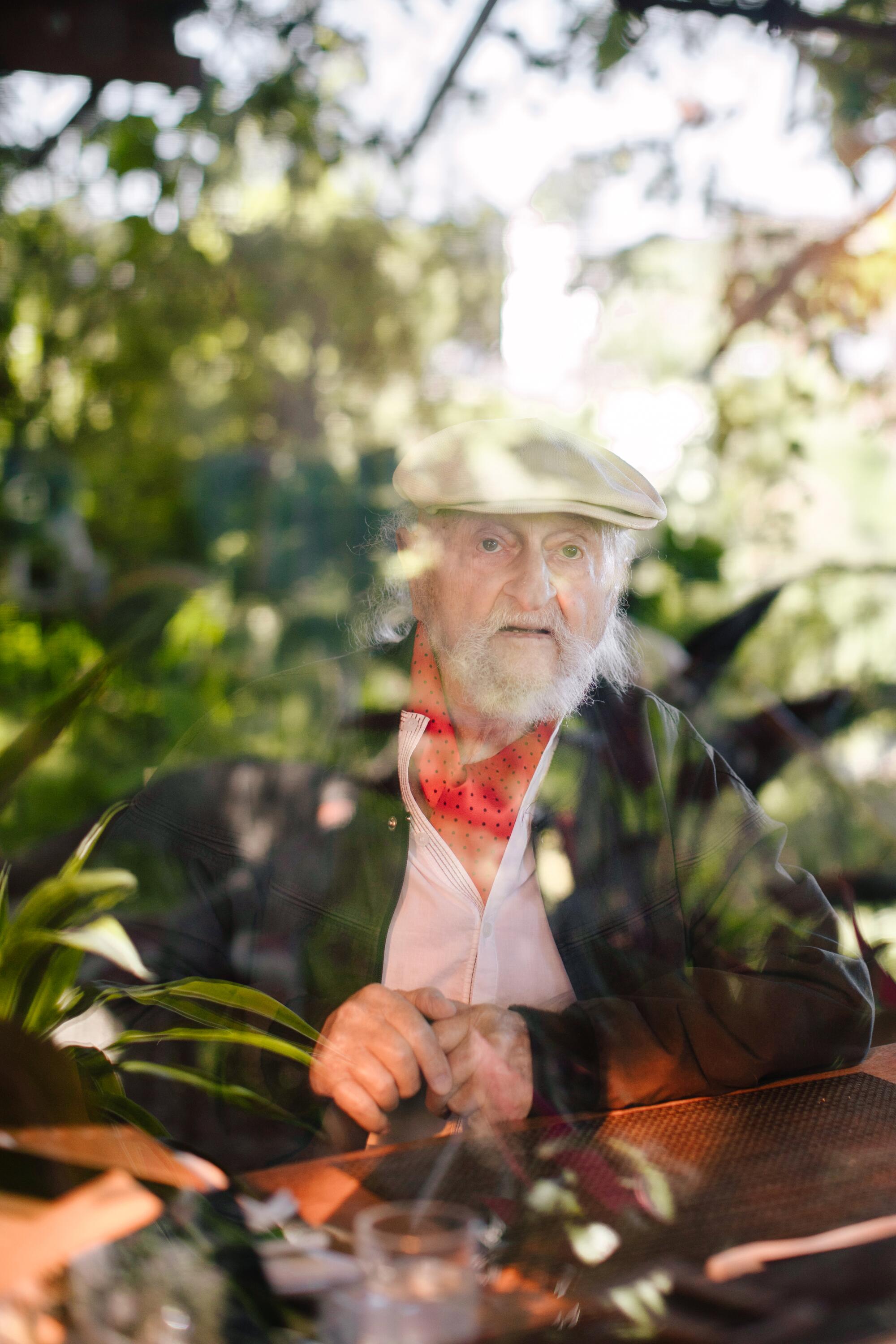
In addition to devoting himself to his garden oasis, Rosenthal has begun writing and reading poetry, releasing a book of fiery political verse titled “Not for Drones” in 2012. A former student, artist H.K. Zemani, recalls running into him at an antiwar rally in the early 2000s. He asked him how his art career was going, to which Rosenthal answered: “I gave it up to save the world.”
Although he has long been focused on his garden as his primary form of artwork, Rosenthal seems torn between dismissing the conventional art world and deeply desiring its approval.
“As he’s aging, his wish to be known has overtaken his wish to be unknown,” says Hirsch.
“I want to be recognized, to have made some contribution to the arts in Los Angeles, without being a frustrated artist,” he says wistfully.
If the reaction to his retrospective show is any indication, he may get his wish. Berger says the response has been overwhelming, with about a third of the hundreds of works in the show sold. “There’s an Ernest for everyone,” Berger says. “It was my mission to make this show happen. I want for Ernest to be recognized and validated and appreciated in his lifetime.”
The exhibition opened Jan. 23, Rosenthal’s 102nd birthday. Ernest was there in his wheelchair, wearing all white except for shiny black motorcycle boots propped up on the foot rests, as his aide, Beatriz Johansson, guided him through the show. Visitors stopped to congratulate him or ask questions about a lifetime of artwork, until he became overwhelmed and withdrew to a couch outside.
An accordionist played nearby as Rosenthal held court before a small cadre of admirers. His discomfort at the sudden attention seemed tempered by delight in the acceptance that had eluded him for the better part of a century.
'Ernest Rosenthal: Retro/ Introspective'
Where: Last Projects at Tin Flats, 1989 Blake Ave., Los Angeles
When: 1 to 6 p.m. Thursdays through Sundays and by appointment; through March 19
Info: info@lastprojects.org, (323) 356-4225
More to Read
The biggest entertainment stories
Get our big stories about Hollywood, film, television, music, arts, culture and more right in your inbox as soon as they publish.
You may occasionally receive promotional content from the Los Angeles Times.











